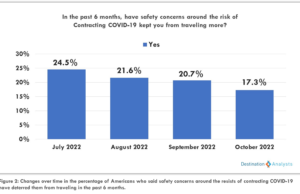Typography is an essential component of design that may greatly improve the impact of presentations, especially when used with programs like Microsoft PowerPoint. The clarity and elegance of your PowerPoint presentations may be significantly impacted by the font choices you use. This article will discuss the art of font selection for presentations, emphasizing striking a balance between style and clarity to make your message both aesthetically pleasing and well-received.
What Is Typography In PowerPoint?
The art of typography is employing text to provide readers with a clear, readable, and visually appealing experience. When making presentations, there are several factors to take into account, such as look, formatting, and font style. As the “body language” of your presentation, typography demands careful consideration in terms of readability, practicality, and placement.
Selecting the appropriate font style will aid in building brand awareness. If your website and signage employ a certain font, this is an excellent place to start when creating your presentations. You can develop the voice and personality of your business by using consistent typography.
Typography has an impact on how readers interpret and process information. This is particularly crucial if you’re sending the deck out for assessment rather than presenting it in person. The presentation must be the one to speak for you. This may impact conversion rates and audience decision-making.
Effective written and vocal communication abilities help you keep your audience’s interest. Nonetheless, effective typography enhances your work by either drawing emphasis to certain elements or, in a more subtle way, by not drawing attention to itself in the form of clunky text styling.
How To Perfect Typography?
Here are some ways you can work on your typography to make compelling and engaging PowerPoint content with PowerPoint design services:
Arrangement
The most crucial thing you can do to improve your typography is to become an expert in hierarchy. This entails establishing a clear visual distinction between the various textual content levels. This makes your material easier to read and skim, and it also helps the user realize what is vital. Your material will be difficult to read and seem less polished than it might be if your hierarchy needs to be better.
Observe the Headlines
In graphic design, typography and headlines are crucial. It is important to ensure that the kerning and letter spacing are set correctly on these words because these are the first, and in some circumstances, the only, words that the viewer will see. Poor kerning will be noticeable to the viewer and might ruin the entire work. Before you even begin spacing your letters, consider adding at least an equivalent amount of tracking if you are kerning a sans-serif font in a typeface.
White Space
A small amount of white space may make a big difference in how effectively your font breathes and fits within your user interface. When spacing elements, it’s important to keep in mind Gestalt’s Law of Proximity, as relationships between objects may be formed based on how close or far apart they are from one another.
Letter spacing can also be used to make text match a brand or design. When writing all capital letters, words become more difficult to read; therefore, adding more space between letters might make text easier to read. This is especially true when typing in full capitals.
Never Use More Than Three Fonts
Avoid using too many typefaces when designing typography. It is unwanted, distracting, and will only make your design portfolio look worse. Rather, keep in mind that less is more! Your design will seem tighter and more professional if you choose three typefaces or less. Additionally, since you won’t have to worry about a nightmarish font landscape, tracking and kerning your fonts will be a lot easier for marketing collateral design services.
Conclusion
The typefaces you choose for your presentations may have a big influence on their overall quality, even if it may seem like a minor factor in the world of PowerPoint design. A thoughtful font choice may convey the intended style and tone while also enhancing clarity, readability, and engagement. You may improve the look and feel of your PowerPoint design by paying attention to typographic principles, thinking about your audience, and making deliberate decisions. This will help to make sure that your message is clear and understood. Choose your typefaces carefully since they will be the language your presentations use to communicate with your audience.














